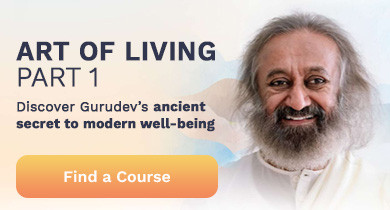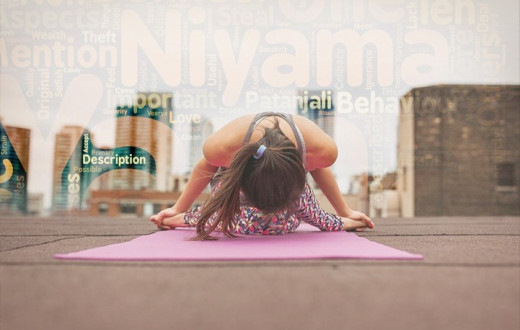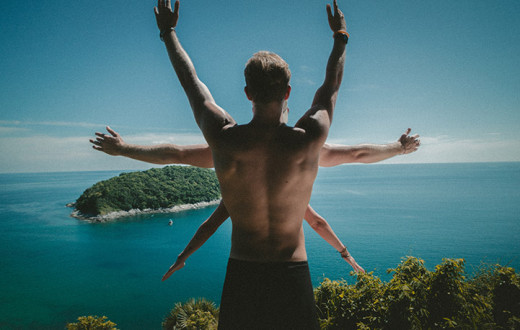By Elizabeth Herman | Updated : November 23, 2020
These 6 yoga poses, along with good sleep, diet, and exercise, can help you stay healthy this winter and all year long. Try them today and every day!
Do you blame cold weather first when you get sick in the wintertime? Many people do. But talk to any yogi in the winter season and you’ll most likely find out that they rarely get sick.
Contrary to popular belief, germs cause sickness, not cold weather. And what makes us susceptible to those microscopic crazymakers? Lack of sleep, poor nutrition, and life stress all lead to a weakened immune system. Stress leads to a breakdown in the body’s ability to defend itself against bacteria and viruses.
Stress, yoga, and the body
When stressed, the body develops resistance to the hormone cortisol. It stays in the blood for extended periods of time, leading to increased inflammation. A new study suggests that yoga can be a helpful way to boost your immune system. It can decrease inflammation.
When sick, you may have noticed that antibiotics and other medicine can help you recover. But medicine fails to improve the body’s immune system. This is where yoga comes to the rescue!
It’s one of the most effective and time-tested natural immunity boosters. It lowers stress hormones and strengthens the nervous system. It also stimulates the lymphatic system, which removes toxins.
Yoga calms the mind. It can contribute to deeper, regulated sleep, which is crucial for wellness. Sleep is one of the most important factors in healing your immune system and keeping it healthy.
So, to beat the stuffy-nose stereotype this winter, take a look at these simple poses:
Sit on your heels. Keeping your hips on the heels, bend forward, and lower your forehead to the floor.
Keep the arms alongside you with hands on the floor, palms facing up. (If this isn’t comfortable, you can place one fist on top of another and rest your forehead on it.)
Gently press on the thighs.
Hold.
Slowly come up to sit on the heels, uncurling vertebrae by vertebrae, and relax.
Shishuasana is an excellent pose to decongest the chest and relax the mind.
To begin, lie on your back.
Fold your knees and keep your feet hip-distance apart on the floor, 10-12 inches from your pelvis. Keep the knees and ankles in a straight line.
Keep your arms beside you, palms facing down.
Inhaling, slowly lift your lower back, middle back and upper back off the floor. Gently roll in the shoulders. Touch the chest to the chin without bringing the chin down. Support your weight with your shoulders, arms, and feet. Feel your bottom firm up in this pose. Both the thighs are parallel to each other and to the floor.
If you wish, you could interlace the fingers and push the hands on the floor to lift the torso a little more up. Or you could support your back with your palms.
Keep breathing easily.
Hold for a minute or two and exhale as you gently release the pose.
This opens the heart and improves blood circulation, increasing energy in the body.
Lie on your back with your arms beside you, palms downwards.
As you inhale, use your abdominal muscles to lift your feet off the floor, raising your legs vertically at a 90-degree angle.
Continue to breathe normally. Supporting your hips and back with your hands, lift them off the ground.
Allow your legs to sweep at a 180-degree angle over your head till your toes touch the floor. Your back should be perpendicular to the floor. This may be difficult initially, but make an attempt for a few seconds.
Tip: Do this slowly and gently. Ensure that you do not strain your neck or push it into the ground.
Hold this pose and let your body relax more and more with each steady breath.
After about a minute (a few seconds for beginners) of resting in this pose, you may gently bring your legs down on exhalation.
Tip: Avoid jerking your body while bringing the legs down.
Plow pose stimulates the thyroid gland, strengthening the nervous system.
Lie on your stomach with your toes flat on the floor and forehead resting on the ground.
Keep your legs close together, with your feet and heels lightly touching each other.
Place your hands (palms downwards) under your shoulders, keeping your elbows parallel and close to your torso.
Taking a deep breath in, slowly lift your head, chest, and abdomen while keeping your navel on the floor.
Pull your torso back and off the floor with the support of your hands.
Checkpoint: Are you putting equal pressure on both the palms?
Keep breathing with awareness, as you curve your spine vertebra by vertebra. If possible, straighten your arms by arching your back as much as possible; tilt your head back and look up.
Checkpoint: Are your shoulders away from your ears? Keep your shoulders relaxed, even if it means bending your elbows. With regular practice, you will be able to deepen the stretch by straightening the elbows.
Ensure that your feet are still close together. Keep smiling and breathing. Smiling cobras!
Don’t overdo the stretch or overstrain yourself. Breathing out, gently bring your abdomen, chest and head back to the floor.
Lie on your stomach with your feet hip-width apart and your arms by the side of your body.
Fold your knees and hold your ankles.
Breathing in, lift your chest off the ground and pull your legs up and back.
Look straight ahead with a smile on your face. Curve your lips to match the curve of your body!
Keep the pose stable while paying attention to your breath. Your body is now taut as a bow.
Continue to take long deep breaths as you relax in this pose. But don’t get carried away! Do not overdo the stretch.
After 15 -20 seconds, as you exhale, gently bring your legs and chest to the ground. Release the ankles and relax.
Lie on your back. Your feet are together and hands relaxed alongside the body.
Place the hands underneath the hips, palms facing down. Bring the elbows closer toward each other.
Breathing in, lift the head and chest up.
Keeping the chest elevated, lower the head backward, and touch the top of the head to the floor.
With the head lightly touching the floor, press the elbows firmly into the ground, placing the weight on the elbows and not on the head. Lift your chest up from between the shoulder blades. Press the thighs and legs to the floor.
Hold the pose for as long as you comfortably can, taking gentle, long breaths in and out. Relax in the posture with every exhalation.
Now lift the head up, lowering the chest, and head to the floor. Bring the hands back along the sides of the body. Relax.
Healthy tips to stay healthy
Detoxify your body by drinking at least 6 to 8 glasses of water daily.
Get a sound sleep of 6 to 8 hours.
Include more green vegetables in your diet and eat on time.
Make sure your diet is getting you your daily amount of vitamins and minerals.
Adopt Ayurveda for a healthy lifestyle.
Follow basic hygiene practices.
Exercise and meditate regularly.
You can view yoga as a holistic practice that strengthens your physical body. As a result, the body’s natural defense mechanisms also improve.
A healthy, disease-free body can be easily achieved. You need to adopt a healthy lifestyle, including eating unprocessed, whole foods. You need to maintain a regular yoga and meditation practice, get plenty of sleep, and cut stress. Ayurveda, yoga, and meditation are the keys to achieving our full potential. To reap the immune-boosting results of yoga, be sure to maintain a daily practice!
Browse our entire yoga poses library, or attend our yoga course and learn more about each yoga pose in detail. If you are interested in becoming a yoga teacher, click here for more information.
While a regular yoga practice can result in improved health, know that it is not a substitute for medical treatment. It is important to learn and practice yoga under the supervision of a trained teacher. In the case of a medical condition, practice yoga after consulting a doctor.
Take your yoga practice to a next level
When you combine your yoga practice with powerful breathwork and meditation, you will bring a lot of depth to your practice. Join Beyond Breath - a free online session with a live instructor, and experience a guided breathwork and meditation now. Here you will also learn about SKY Breath Meditation that has helped millions of people worldwide to reap the deeper benefits of yoga and take their yoga practice to a next level. Are you ready for it?
This content is not intended to be a substitute for professional medical advice, diagnosis or treatment. Always seek the advice of your physician or other qualified health providers with any questions you may have regarding a medical condition.
Elizabeth Herman is a long time meditator, a trained yoga teacher, and a PhD in English, with concentrations in Rhetoric and Composition, and Literature. She offers writing support to clients, teaches locally, and volunteers for a better world.





























